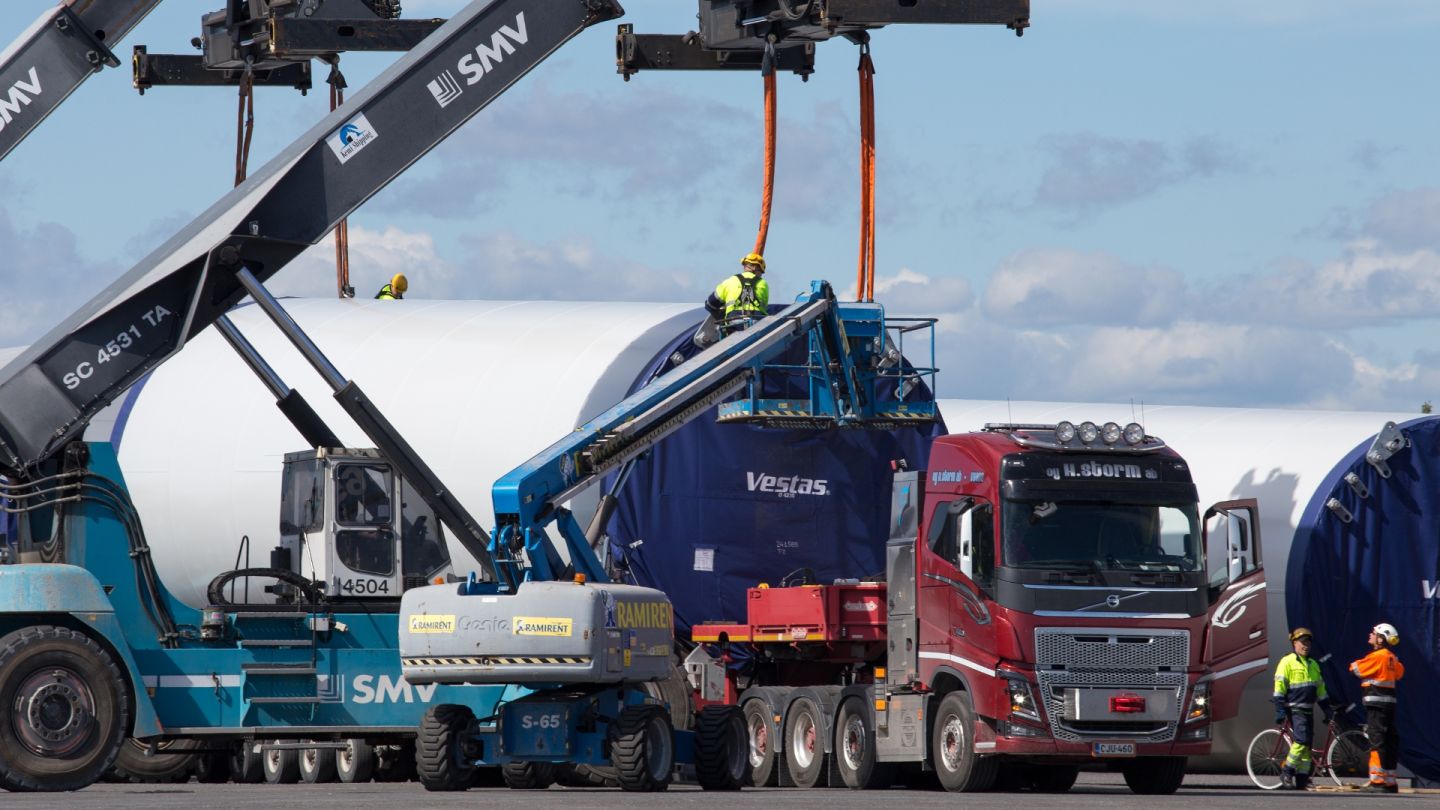A well developed and well maintained road network is a must for any economy and its growth. In that context, the road infrastructure in Finnish Lapland is in quite a good shape, thanks to the sustained maintenance and improvement efforts of the agencies concerned. However, some planned major investments require improvements to certain road sections.
Although there are other important roads, currently, the national road 4 passing through Rovaniemi to Utsjoki in the north and through Kemi and Oulu to Helsinki in the south, and the national road 21 are most in focus for improvement and development, said ELY Centre for Lapland Director-General Jaakko Ylinampa.
Large scale industries generating traffic volume
– When evaluating the investment needs in the road infrastructure in such a dynamic economic environment, one ought to take into consideration the timeframe within which a particular investment is required, said Ylinampa.
Ylinampa said as a prologue to detailing the factors that determine the degree of improvement or development focus on a particular road. Short-term plans are clearer, he said, than long-term visions, as those could be subject to revisions based on situational changes and need reassessment outcomes.
Explaining the high priority of national roads 4 and 21, the Ely DG said, Lapland is home to a number of industries, such as forestry, mining and metal, which results in a large traffic volume, mostly on these two highways. Mining activities, in particular, generate a huge traffic volume, for examples, Ylinampa named the Agnico Eagle mines in Kittilä located in between the two prime roads and the Boliden mine in Kevitsa adjacent to the highway 4. He also pointed out that there are now five mines in Lapland awaiting permits for going into operations, which also spells yet more traffic load for these two roads.
Referring to the Sakatti mine set to open in the recent future, Ylinampa said,
– If the project is realized, there will be big investment needs to improve the road section between Sodankylä and Rovaniemi.
He also remarked that it would be wiser to do the improvements in advance, as setting up a mine requires specialized transports like seven-meter wide vehicles running to the site.
Apart from mines, the BRP snowmobile factory in Rovaniemi, the Outokumpu steel factory in Tornio, the buzzing pulp and paper industry and the timber industry, such as Stora Enso and Metsä Group, in the Kemi-Tornio area also account for a large share of the traffic on those two national highways.
New investments requiring road infrastructure development
Another key reason for investing in road infrastructure in Finnish Lapland is the impending rise in needs of some industrial units like the biorefinery plant in Kemi and the bioproduct company in Kemijärvi when they go into production. About two million cubic meters of timber will be transported to each of them a year, mostly by road.
In face of the future traffic spike, a plan is already in place to improve the Kemi-Oulu section of the highway 4, said Ylinampa. The finance is ready and implementation of the plan will start in 2019.
There are other road improvement projects in the pipeline, too:
– We have been preparing plans for certain stages of the road between Kemi and Rovaniemi, not the whole stretch – the hotspots where we lack in the service level. We hope if the planned [industrial] investments are realized, there will be a kind of infrastructure package to ensure the safety of traffic and transport so that these factories can run smoothly.
According to the Ely director, even if the industrial projects are not taken into consideration, the Kemi-Oulu road section still has to be improved.
– There is already financing for some sections, and we need to improve the Kemi-Rovaniemi-Sodankylä (stretch), and this by a rough estimate will cost approximately 150 million euros.
The road sections from Kuusamo to Kemijärvi and from Kemijärvi to Sodankylä on the national road 5 should also be improved, as the Kemijärvi bio product factory is quite close to the road and timber will be rolling into the factory from all directions, said Ylinampa. He said the improvements of the Kuusamo-Kemijärvi and the Kemijärvi-Sodankylä road sections would need about 140 million euros including also other road improvements in the area, while the upgrading of Kemi-Rovaniemi section would require another 140 million euros.
Another factor necessitating road development and improvement is the fish transportation from Norway, which, according to Ylinampa, has been rising in volume. In this case, too, the national roads 4 and 21 are crucial, though the latter is the more important one.
– The end stretch between Kilpisjärvi and Palojoensuu hasn’t been improved yet. However, the Kolari-Palojoensuu section has already been upgraded. The [Kilpisjärvi-Palojoensuu road] job would need approximately 110 million euros, the Ely DG said.
– Investments are needed for regular maintenance work like repairing old bridges and pavements, strengthening weak structures, etc. There is also the question of improving road structures to withstand the traffic of heavy-duty vehicles, said Ylinampa. Policymakers are now discussing the issue of elevating the weight limit of trucks from the existing 76 tonnes allowed by the latest regulation.
The last and not the least reason for improving Lapland’s road network is its recent tourist boom which brings more and more vehicles including buses, cars, SUVs etc on the road, observed Ylinampa.



